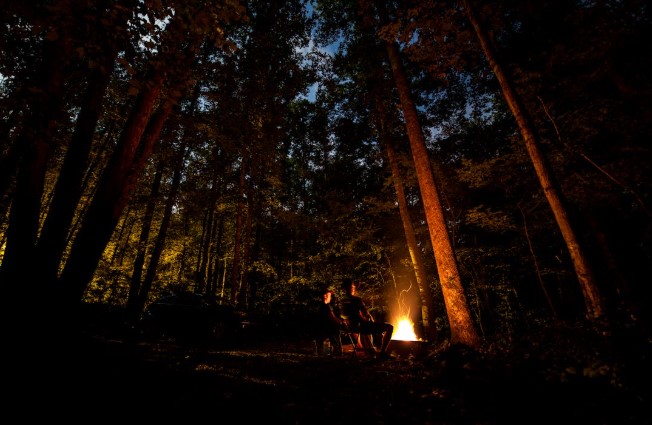How solar dims fireside storytelling
By Milliam Murigi, May 24, 2025In a quiet village in Kenya’s Bomet County, 16-year-old Jerusha Chepkemoi reads her biology notes under the clean, bright light of a solar lamp.
Her younger siblings are also scattered around the home, each in their own corner. One doing homework, and two others scrolling through their mother’s smartphone. The crackling evening fire that once united the family in warmth and stories is now abandoned.
“It’s better for the children’s health. We no longer have smoke in the house. They can study longer without coughing.However, something else has faded with the firelight, the intimate fireplace conversations,” says Jerusha’s mother, Janet Chemtai.
But something deep is being eroded.
“There are things I learned from my mother and grandmother when we used to sit around the fire. They would tell us about our bodies, marriage, how to protect ourselves. Now, the house is quiet,” says Chemtai. Across Kenya, the rapid adoption of clean energy is transforming lives. Government programs and NGOs have installed solar panels, distributed clean cookstoves, and expanded access to mobile technology, reducing indoor air pollution, improving academic performance, and saving families hours once spent gathering firewood.
Lessons on sex education
Yet, in the glow of this progress, something deeply cultural is being lost, the evening fireside space for storytelling and intergenerational learning, where youth once received informal but vital sexuality education. As the firewood piles shrink, so too does the opportunity for rich, face-to-face dialogue that once grounded the youth in tradition and guided them through life’s complexities.
“The fireplace was our classroom,” says Leah Cherono, a 68-year-old elder in Narok County.
“We didn’t call it sex education, but we spoke about it. How a girl should behave, what to expect when she starts menstruating, and how to protect herself from men who promise things.”
Today, those lessons are harder to come by. Many parents, like Chemtai, feel that modern life doesn’t afford the same intimate time with their children. Others are unsure how to approach such sensitive topics without the natural setting of the fireside.
Ironically, solar energy has also brought mobile phones and television deeper into rural areas. Instead of gathering in one room, families now spend evenings watching different content or texting friends.
“We’re seeing a gap. Children are more informed digitally but less grounded culturally. Some of the values that protect them like learning to say no, or understanding how to negotiate relationships used to be passed on at the fireplace,” says Kabii Thuo, a social researcher with an interest in human behaviour.
Even as formal education systems introduce limited reproductive health content, it often lacks the nuance and cultural grounding that elders provided. Some topics like consent, bodily autonomy, and navigating relationships are either skipped or taught abstractly in classrooms, if at all. While technology offers access to more information including reproductive health it’s also unfiltered, and often more confusing than clarifying. Without parental guidance or open dialogue, young people turn to peers or the internet, where myths and misinformation abound. According to Thuo, though society always has a way of mitigating and balancing any adverse effects of change, this scenario presents a serious problem that has not been solved because it is complex.
“How do you replace the memories created when generation A moulded generation B in such critical matters of sexuality? This is the key cause of maladjusted and anomaly witnessed in the society today with regard to sexuality,” says Thuo. According to him, there’s need to reimagine the fireplace. While it may no longer be an actual fireplace, new spaces must be created where families can connect and communicate. Without this, there is risk of losing the richness of our oral traditions and the protective role they played.
The energy transition must go hand in hand with a social transition one that safeguards cultural practices essential to youth well-being.
“The loss of traditional fire spaces, combined with the natural passing of the true custodians of memory, folk wisdom, and inspiration, is affecting not just sex education but many other aspects of social life,” says Thuo.
The place of mentorship has also been taken.
“The modelling and mentorship of the girl-child have also been inadvertently impacted, as the bonding and informal learning that took place there has largely disappeared.”
He also reveals that the fireplace isn’t the only tradition disappearing. The fading of the thingira (traditionally the father’s hut among the Kikuyu where boys were mentored), has also deeply affected sex education and character formation for the boy-child.
Adopting innovative models
In the absence of the thingira, many boys are now growing up without consistent male mentorship or spaces for structured guidance. This vacuum is being filled, in some cases, by social media and peer groups, which may not always offer positive or culturally rooted messages.
“The good thing is in response to the erosion of traditional mentorship spaces, some communities are adopting innovative models to restore intergenerational dialogue and preserve cultural heritage. In parts of Narok and Kajiado, village-based “girls’ clubs” supported by NGOs bring together elders and adolescents for open discussions on life skills and reproductive health. Other communities are using community radio programs that mimic fireside chats helping restore intergenerational dialogue that once flourished around the fireplace,” says Thuo.
Thuo says as clean energy brightens our homes across Kenya, the greater challenge lies in preserving the intimate conversations once nurtured by the glow of the fireplace ensuring that the flames of wisdom, identity, and intergenerational connection are not quietly dimmed by the dazzling light of progress.
